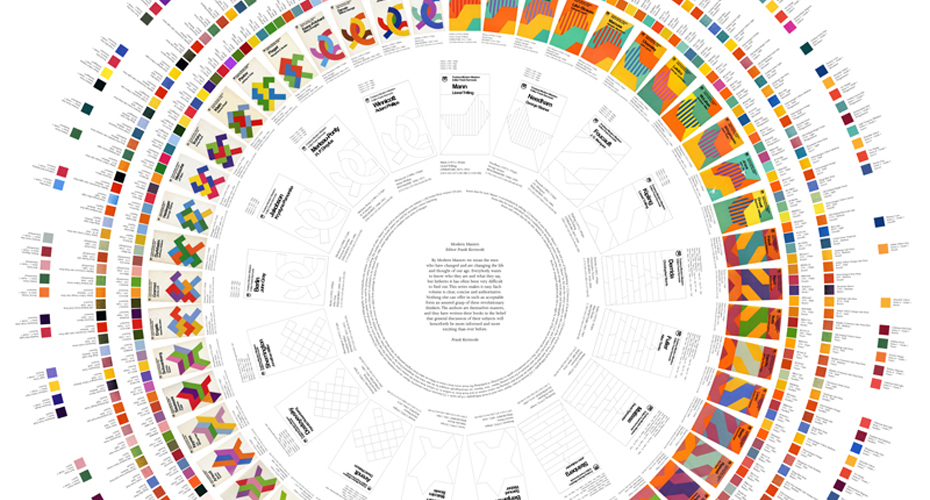British conceptual artist Jamie Shovlin calculates a superstructure of intellect, using the Fontana Modern Masters series as his guide

Jamie Shovlin is an artist fascinated by the tension between reality and invention. In 2004 he revealed the remarkable drawings of Naomi V. Jellish, a schoolgirl who disappeared aged 13. It was only after Charles Saatchi bought the whole exhibition for £25,000 that the girl’s name was unscrambled to reveal the name of the exhibition’s the true creator – James Shovlin.
For his exhibition at the Haunch of Venison Gallery the artist imagined a superstructure whereby intellect is quantified and ordered into a league table based on the cover designs of the Fontana Modern Masters series. These pocket guides, published in the 1970s, featured great thinkers including Sigmund Freud, Franz Kafka and Marcel Proust.The covers were unprecedented, designed with abstract geometry and tessellating patterns. Oliver Bevan produced three sets of the abstract designs, followed by artist James Lowe who designed the following three series. James Pardey’s site dedicated to the Modern Masters Series gives a comprehensive guide to these vibrant cover designs.
In this exhibition, Shovlin has turned these covers back to art as he designs covers for the 17 missing books that were never printed by creating an intricate formula to ‘accurately’ predict how the covers would appear, using the 49 printed books as his guide. As if filling in the gaps for the missing elements in the periodic table, his method was scientific. Shovlin created a wheel, the Fontana Colour Chart, which he used to analyse the cover designs.
Each Modern Master was awarded an intellectual ‘score’ according to eight criteria, including the number of pages, the number of other Modern Master texts cited in the bibliography and whether they were a Nobel Prize winner.
“The multiple designs are an admission that Shovlin’s hierarchy of intellect is flawed, hinting at the faults in classificatory systems in every day life”
The points were then counted and recorded on the colour wheel, with the total score indicating the intellectual weight of each book. Using this points system Shovlin predicted the palette of the future cover designs, by obsessive calculation and precise colour matching. Using his wheel as a guide, he attempted to paint by numbers.
In contrast to this precise calculation, there was no thought behind the colours used in the original series, so this system is simply an absurd fiction obsessively devised in the mind of Shovlin.
The first gallery space is a ‘laboratory,’ displaying the colour wheel and a plinth filled with painter’s overalls, original books, letter stencils and paints. This “before” room sets up an exhibition that will be painstakingly systematic.
But the large modernist canvases displayed throughout the gallery make it clear that this is a painting show. Shovlin’s scientific method ran into the aesthetic when applied to the canvas. He chose his final cover designs outside of the realm of logic, simply choosing what he thought looked best. And the result is a compelling geometry of colour.Shovlin created four variations for each imagined cover and painted them all onto the canvas. Buried beneath the final designs are three other versions, which can be detected by lines, shadows and overlaps. Colours drip down the side of each canvas, revealing the hidden depth of each painting.
Haunch of Venison argues that the multiple designs are an admission that Shovlin’s hierarchy of intellect is flawed, hinting at the faults in classificatory systems in every day life.

These designs go beyond flat graphics. Depth is added to high modernist abstraction with thick acrylics, transparent patches and drips of paint. He also uses watercolour, the archetypal medium of the amateur, which drips over the cover designs once again suggesting that his system is futile.In a departure from his conceptual instillations, Shovlin spent five months in the studio on this painting project. Perhaps it is this attempt to be ‘a painter’ which is most compelling.Shovlin’s paintings are showing at the Haunch of Venison Gallery, London from April 18 to May 26




